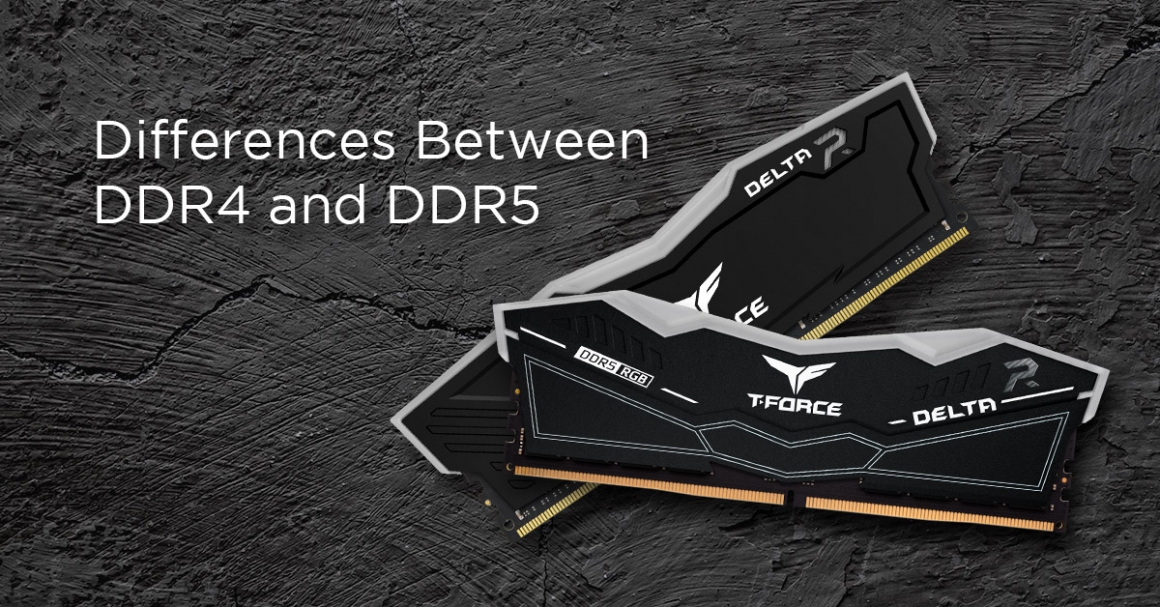
2021 can be said to be the first year of the official launch of DDR5 memory. The specification has been created since 2019, and after more than a year of research and development, many manufacturers have released their products this year.
TEAMGROUP has always been at the forefront of this wave, we are much ahead of the competition in both standard JEDEC memory and overclocked gaming memory. The following is a list of the differences between cross-generation DDR5 memory and the previous generation DDR4 based on the experience we have had over this period of time.
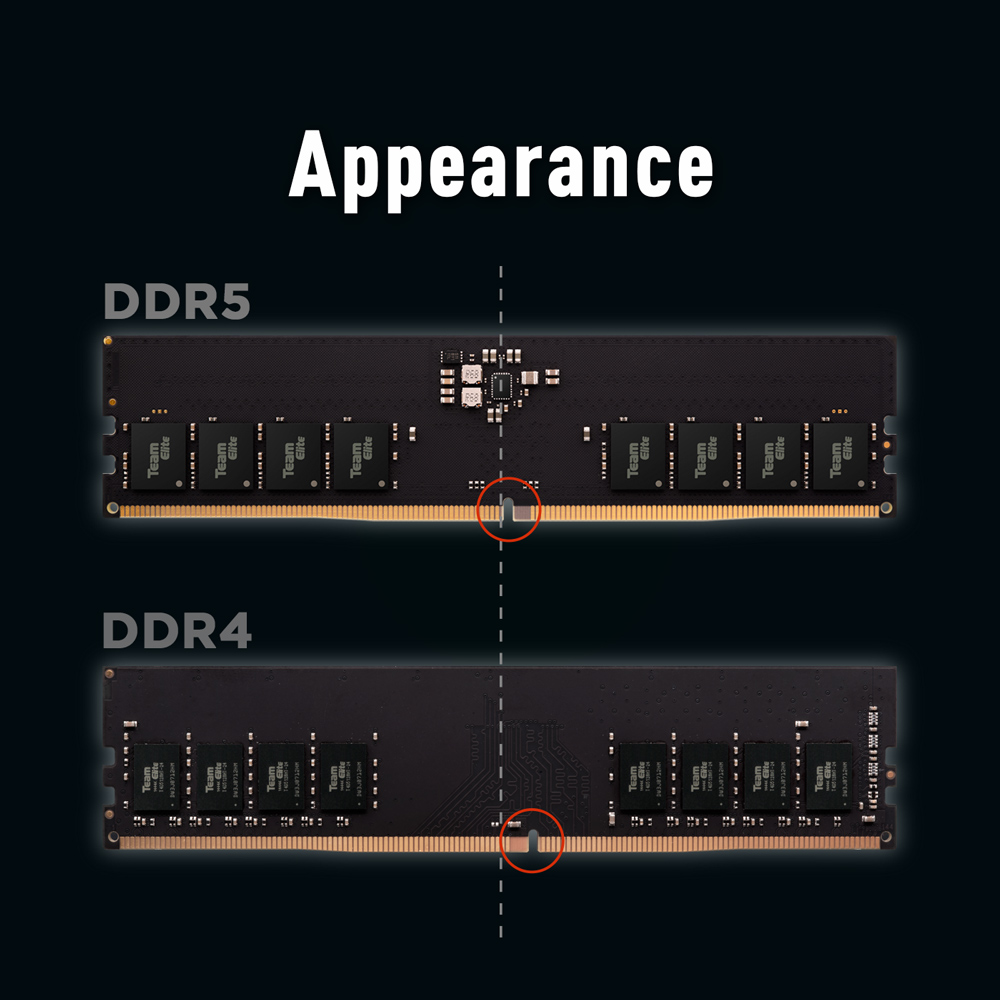
Appearance
Let's examine directly from the picture. First, there is a big difference in the PCB layout. There is an extra space above to place the new smaller ICs and capacitors (This will be explained later); Secondly, the position of the foolproof latch for the gold contacts has also been adjusted. There has been a tendency to move close to the middle during the process of conversion from DDR3 to DDR4. In the DDR5 era, it is closer to the middle, even though it is still slightly to one side. However, consumers need to pay more attention when installing the memory to ensure that it is inserted in the correct direction and not to break the gold contacts by applying direct pressure.
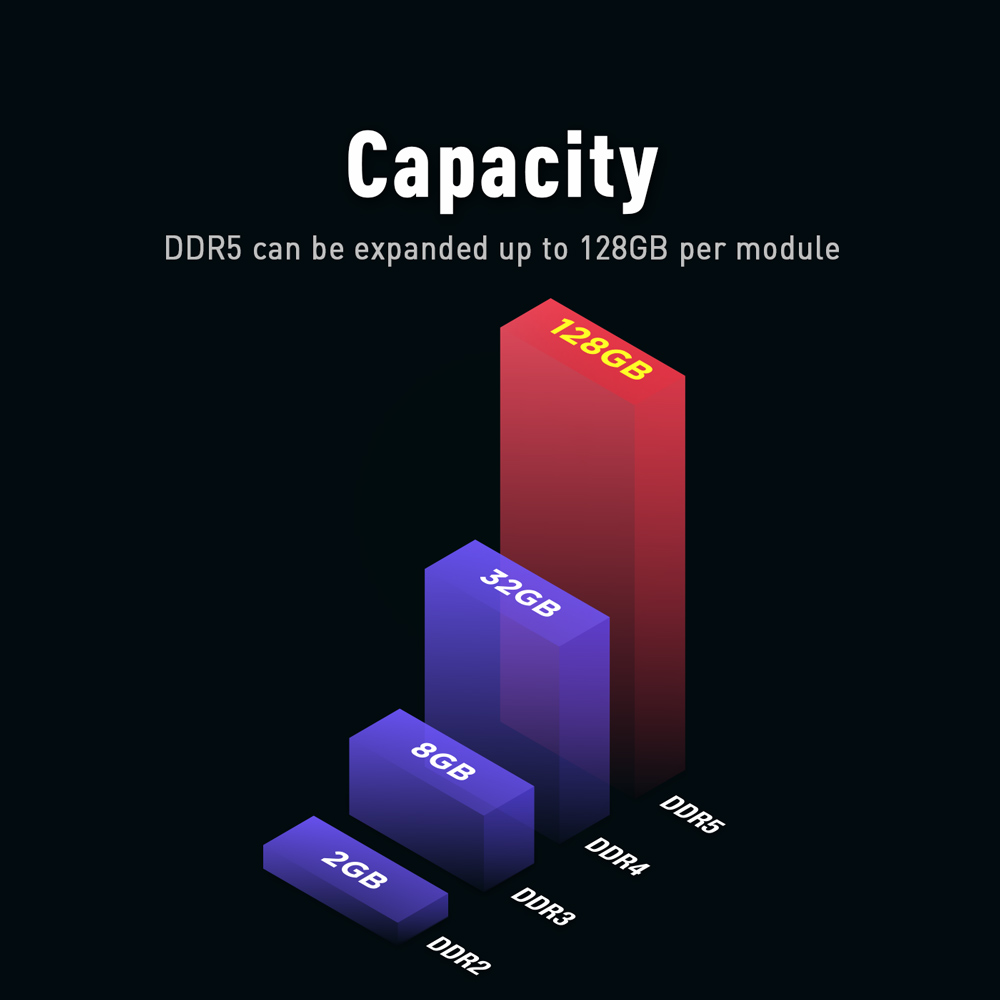
Single stick maximum capacity
The maximum capacity of a single memory stick was up to 32GB in the DDR4 era. Based on mainstream motherboards supporting 2DPC (2 DIMM Per Channel), the most common total memory capacity for the DDR4 platform is capped at 128GB; In the DDR5 era, it has crossed to a new level completely that a single memory can reach up to 128GB. The total memory capacity can reach 512GB if the same 2DPC motherboard is used for comparison. With a total memory capacity of up to 512GB, it is hard to imagine how much more multi-tasking can be done at this stage, as this is already the capacity of mainstream SSDs today. Looking at the DDR development history, the capacity limit of DDR5 is also very much in line with the past standard, with each generation having 4 times the capacity limit of the previous generation. I can’t help but look forward to the impact that a single 128GB DDR5 memory will have when its development is officially completed.
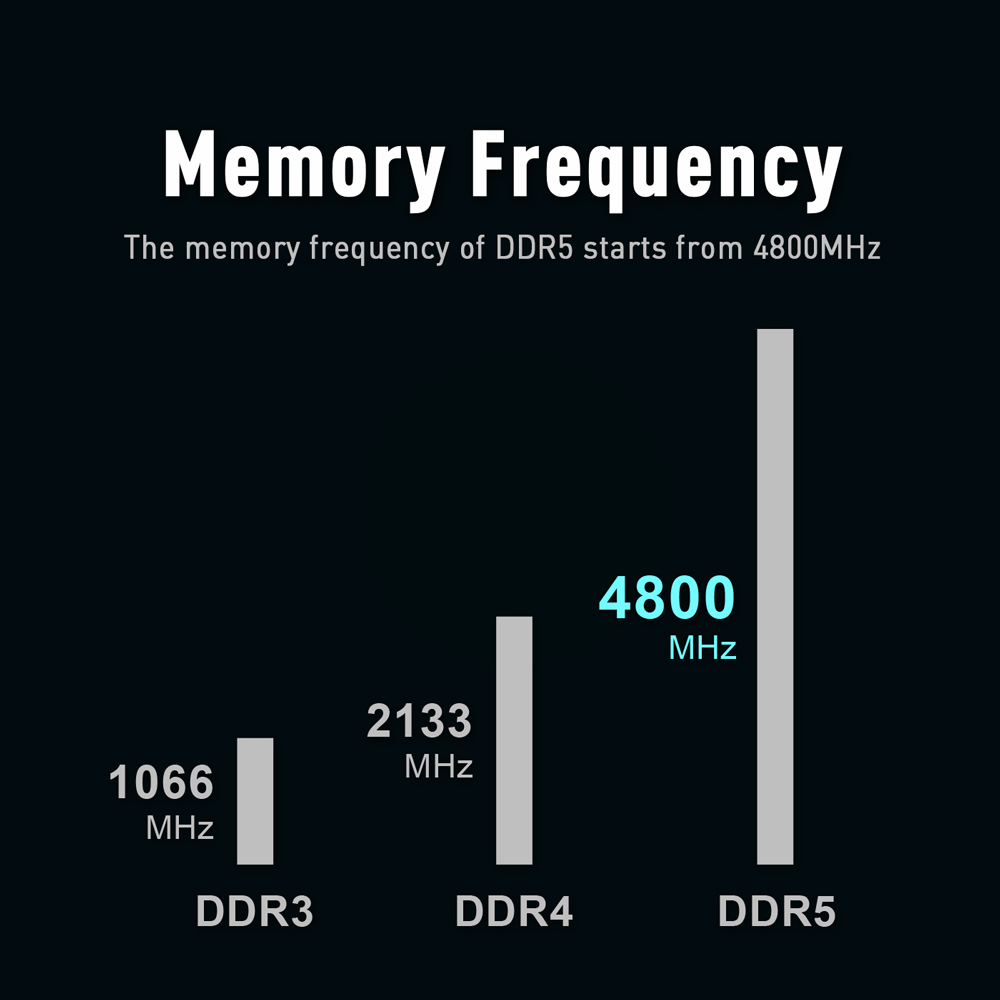
Initial frequency
If you are a gamer who pays attention to the memory market, you may have noticed one thing that the initial frequency and capacity of the DDR generations have evolved in a similar pattern in the past, with the frequency growing by a factor of two. For example, the initial frequency of the DDR3 generation is 1066MHz, and the DDR4 generation is 2133MHz. However, the frequency is 4800MHz in the first batch of DDR5 products exposed this time, which exceeds the original logical inference of 4266MHz. Whether there will be 4366MHz in the future, it is unknown. What is certain is that this is surely something to be happy and look forward to. The initial standard product already surpasses the basic definition, so I believe the overclocking part can be very different and worthy of our exploration.
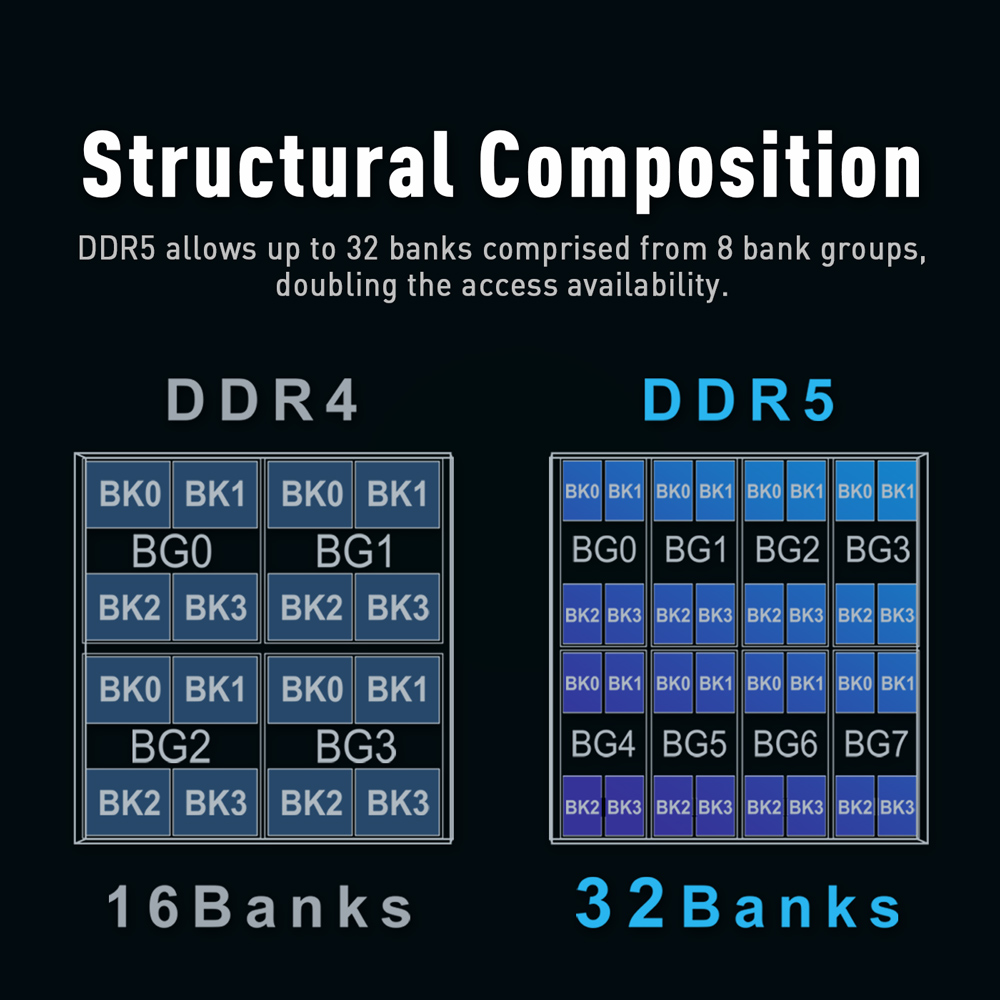
Structural composition
DDR5 uses a 32 Bank (storage unit that can be individually enabled/disabled) structure with 8 Bank Groups, twice as much of access availability as DDR4's 16 Bank structure with 4 Bank Groups. The Burst Length (the amount of data that can be accessed by a single DRAM read/write command) of DDR5 has been increased from 8 to 16 in DDR4, which is also a key feature to increase performance. Unlike DDR4, which cannot perform other operations during refresh, DDR5 uses the Same Bank Refresh function to allow the system to access data in other Banks when refreshing certain Banks. On the other hand, DDR5 also eliminates noise through Decision Feedback Equalization (DFE) to increase overall performance. Simply put, DDR5 can access twice as much data per IC as DDR4!
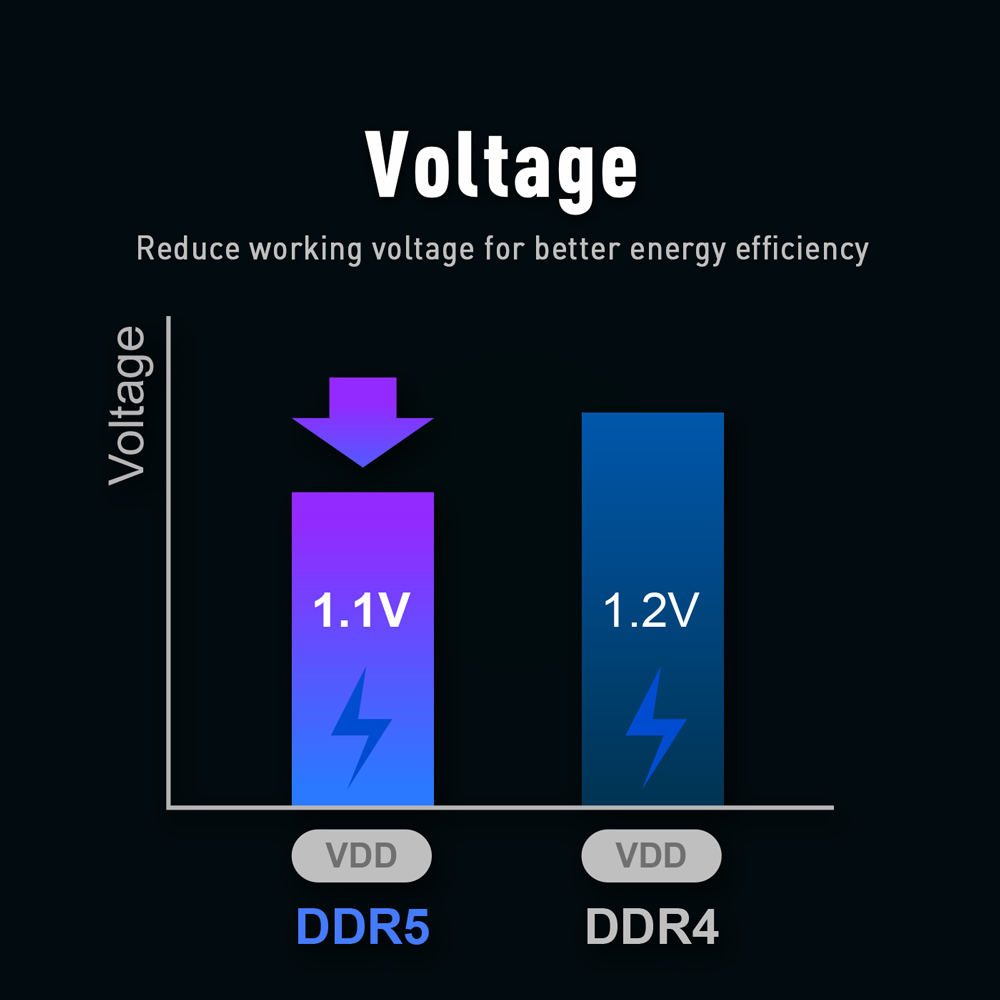
Basic operating voltage
With the evolution of generations, the basic operating voltage of the memory continues to decrease, which means that the operation of the memory is getting more energy-saving. In the DDR3 generation, 1.5V is required to support the operation of standard memory. The DDR4 generation requires 1.2V, and the DDR5 generation only requires 1.1V. We will not discuss here about the voltage required for overclocking. After all, different overclocking frequencies require the voltage to be adjusted, which is totally another subject.
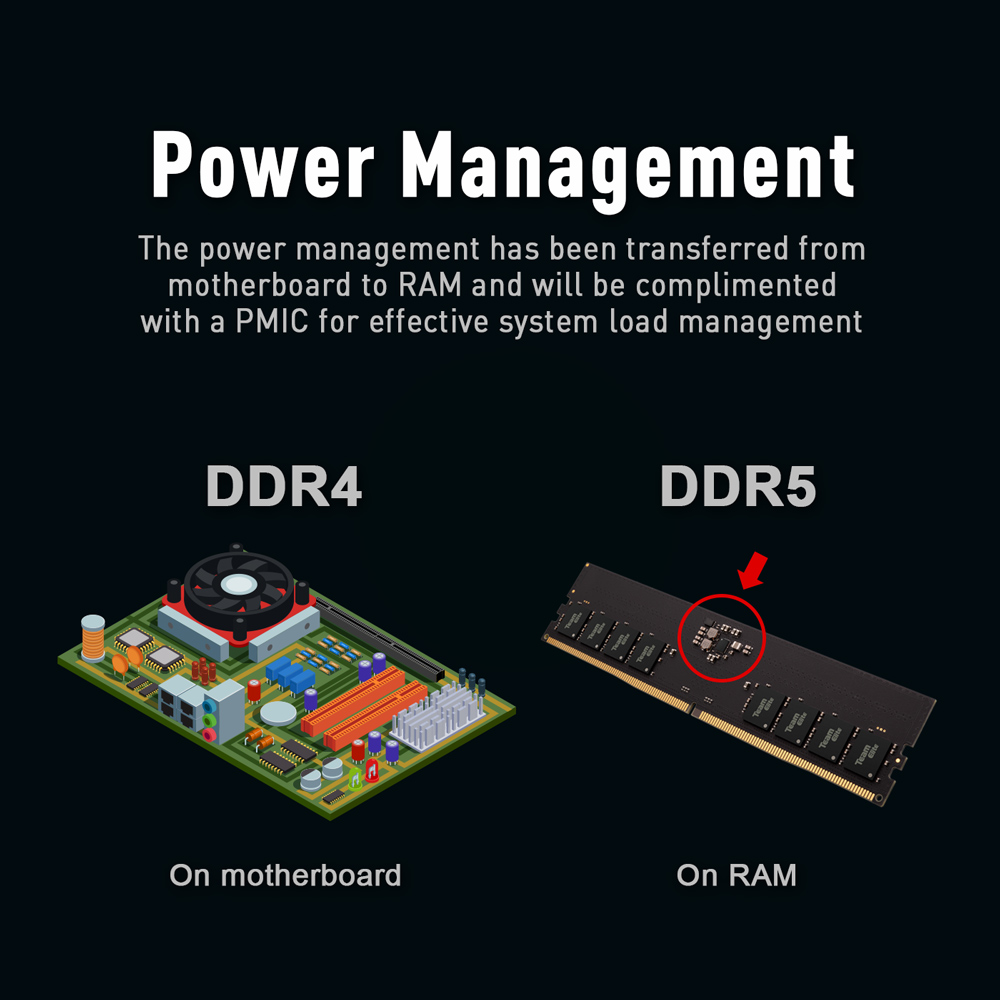
Power management
The power management function used to be set on the motherboard, which defined the amount of voltage to be supplied to the memory. However, after entering the DDR5 generation, the basic operating voltage has dropped to 1.1V, and the signal tolerance has become very small. Therefore, the memory must have a very good ability to recognize signals, and moving the power management directly to the memory is an excellent solution. You can see in the picture that there is a block above the memory with an extra small IC and some capacitors (mentioned earlier), which is DDR5 memory configured with a 5V power management IC on the DIMM. It can more effectively control the power of the memory directly, and improve signal integrity and noise identification ability.
To put it into simple words, 1.1V is too low to be controlled by the motherboard, so it is better to control the power signal directly from the memory itself, and this way the power signal can be controlled more stably.
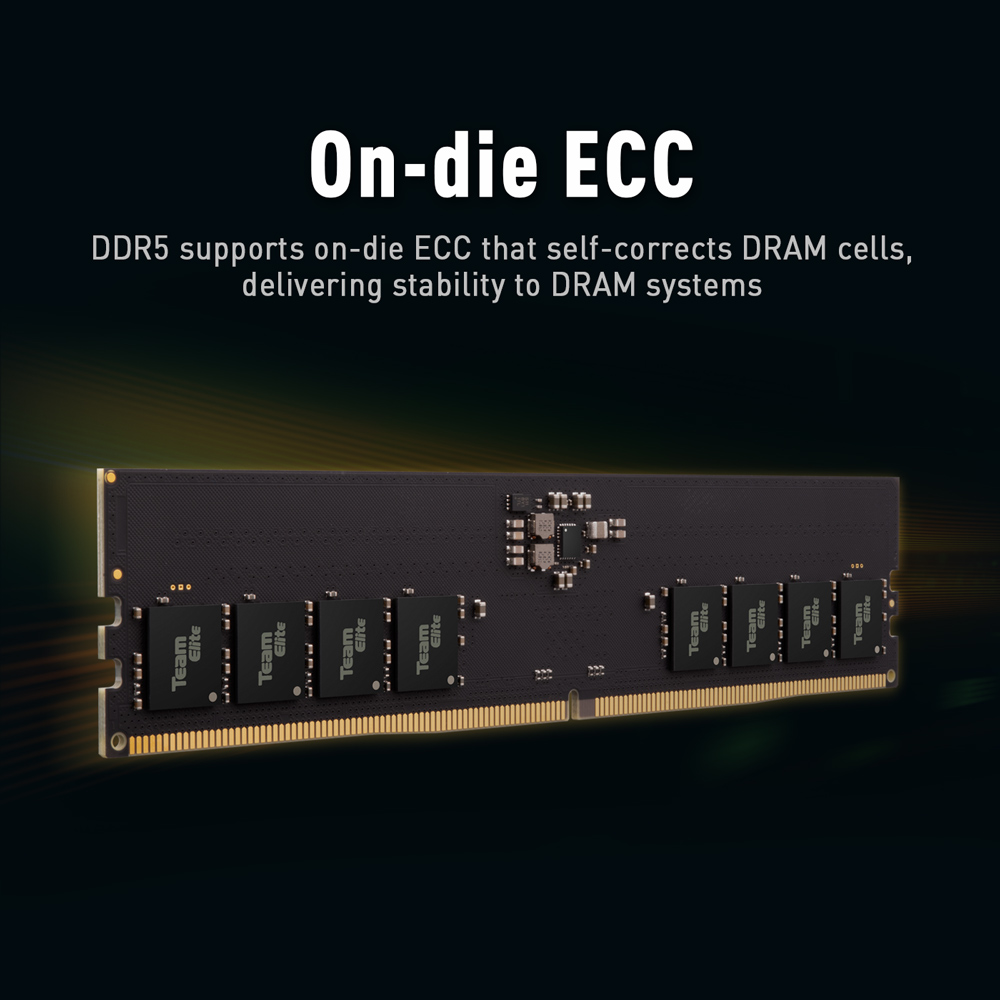
On-die ECC
The full name of ECC is Error-Correcting Code, which is an error correction technology widely used in computers in different areas. It can make the memory more stable when applied to the memory. However, in the past, for ECC function, an extra IC was needed to correct the errors, so you will see 9 ICs on one side of the ECC memory instead of the common 8. It also needs to be supported by the motherboard or CPU itself in order to use ECC memory.
The DDR5 generation is completely different, as each IC comes with its own ECC debugging function. This automatic error correction feature allows systems using DDR5 memory to have higher stability and no interruptions due to errors.
Relationship between overclocking and operating temperature
As we all know, the overclocking process will produce a lot of heat, and whether the heat can be properly handled is also a very important key factor affecting overclocking. In the previous generations of DDR4 (including DDR3), the surface of the IC is the place where heat is more likely to be generated in the memory. Therefore, whether in the design of a heat sink or in the process of extreme overclocking, special attention is paid to the cooling of the IC. However, in the DDR5 generation, because there is an additional PMIC, and this PMIC itself will also generate heat, so there is an additional point to consider in the solution of heat dissipation. If the heat of PMIC is not handled properly, it will also affect the stability of overclocking. Let me secretly reveal the news that I have received. Since TEAMGROUP has deployed ahead of schedule for heat dissipation as early as 2019, it has found an excellent way to solve the heat generated by the PMIC, so the new gaming overclocking memory is very stable and is definitely the best choice for DDR5 generation memory purchase! These are the key differences between DDR5 memory and its predecessor. If there is any new research progress or new knowledge about DDR5 memory in the future, I will share it with you at any time. Let's embrace the arrival of a new generation together!
